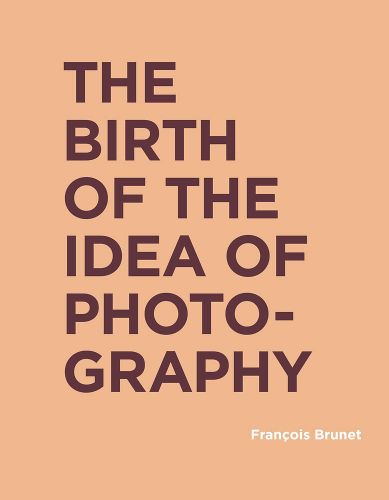Readings Newsletter
Become a Readings Member to make your shopping experience even easier.
Sign in or sign up for free!
You’re not far away from qualifying for FREE standard shipping within Australia
You’ve qualified for FREE standard shipping within Australia
The cart is loading…






A milestone work that examines the democratic idea of photography and its expansion in common culture, particularly in the United States; generously illustrated.This influential text by French historian and theorist Fran ois Brunet considers the invention and history of photography as the birth of an idea, rather than a new type of image. This idea photography combines a logical theme-that of an art without artistry-and the democratic political promise of an art for all. Officially endorsed by the 1839 French law on the daguerreotype, this idea reverberated throughout the nineteenth century in Europe and America. Brunet shows how emerging image technologies and practices in France and Britain were linked to this logical/political construction of photography, from the earliest researches of Nicephore Niepce, Louis-Jacques-Mande Daguerre, and Henry Fox Talbot up to the turn of the twentieth century. The parallel development of the Kodak camera and Alfred Stieglitz’s straight vision in the United States then fulfilled, while also depreciating, the utopian promise of photography for all. This history reached a provisional climax with the reflections on images by Ralph Waldo Emerson, Hippolyte Adolphe Taine, Sigmund Freud, Henri-Louis Bergson, and Charles Sanders Peirce, reflections that both demonstrated the novelty of photography and forecast many later debates on its technology and aesthetics. The Birth of the Idea of Photography has been enriched with more than fifty photographs, reproduced in color, from North American and European collections. This edition also features a new preface by the author.
$9.00 standard shipping within Australia
FREE standard shipping within Australia for orders over $100.00
Express & International shipping calculated at checkout
A milestone work that examines the democratic idea of photography and its expansion in common culture, particularly in the United States; generously illustrated.This influential text by French historian and theorist Fran ois Brunet considers the invention and history of photography as the birth of an idea, rather than a new type of image. This idea photography combines a logical theme-that of an art without artistry-and the democratic political promise of an art for all. Officially endorsed by the 1839 French law on the daguerreotype, this idea reverberated throughout the nineteenth century in Europe and America. Brunet shows how emerging image technologies and practices in France and Britain were linked to this logical/political construction of photography, from the earliest researches of Nicephore Niepce, Louis-Jacques-Mande Daguerre, and Henry Fox Talbot up to the turn of the twentieth century. The parallel development of the Kodak camera and Alfred Stieglitz’s straight vision in the United States then fulfilled, while also depreciating, the utopian promise of photography for all. This history reached a provisional climax with the reflections on images by Ralph Waldo Emerson, Hippolyte Adolphe Taine, Sigmund Freud, Henri-Louis Bergson, and Charles Sanders Peirce, reflections that both demonstrated the novelty of photography and forecast many later debates on its technology and aesthetics. The Birth of the Idea of Photography has been enriched with more than fifty photographs, reproduced in color, from North American and European collections. This edition also features a new preface by the author.